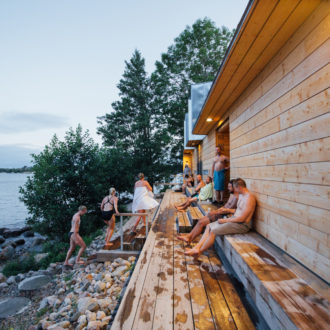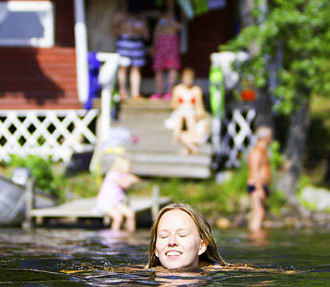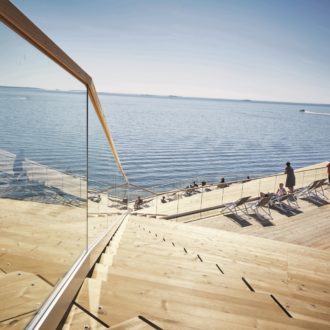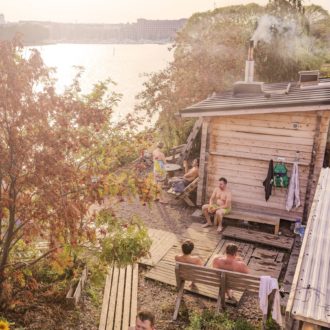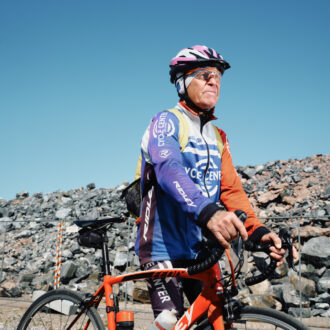How should a visitor to Finland react to the following proposition?
You are invited to take off all your clothes and go to a little room heated to almost 100 degrees Celsius (212 degrees Fahrenheit), where you will sit, naked, with others for a while and sweat. Then you will go outside and jump (still naked) through a small hole in the ice on a lake, the sea or whatever and refresh yourselves in the freezing water – or roll in the snow instead.
In short, “What about a sauna?”
The answer should be simple. Be courageous and say “yes” – because if you don’t you will miss a deliciously relaxing experience which will provide a vital insight into the culture and mentality of your Finnish hosts.
Saunas have existed in other cultures, but in Finland they have become entwined in the national culture. In days gone by, they were the most practical place to wash during the long winters when there was no hot running water. You can still find people in Finland who were born in a sauna. Not when it was heated up, of course, but it was a sterile place where hot water was available.
It is estimated that there are three million saunas in Finland, for a population of 5.5 million. Big companies and state institutions have their own saunas. The president has an official sauna, as does the prime minister. Saunas can be found in city apartments and country cottages.
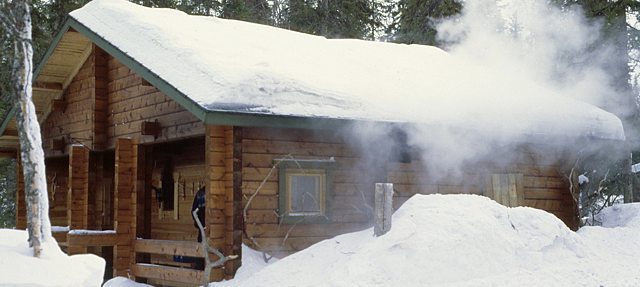
A smoke sauna in winter attire.
Traditional saunas are heated by wood, burned either in a stove with a chimney, or by a stove with no chimney. The latter – a smoke-sauna – is the original sauna, and most Finnish people believe it to be the best kind. The door is closed after the wood has burned down (and most of the smoke has escaped), leaving the embers to heat the sauna to the proper temperature, yielding a soft heat and an aroma of wood smoke.
In all saunas, the stove heats a basket or tray of rocks, and you throw water on the stones to increase the humidity. Called löyly in Finnish (for pronunciation, contact your host), the steam increases the feeling of heat and makes you sweat.
Basic etiquette in the sauna is quite simple. You first take all your clothes off – something you have to try not to be shy about. It is considered polite to shower before going in. Otherwise, there are few rules. Stay in as long as you feel comfortable, and return to the sauna several times if you wish.
When you come out of the sauna, jump in a lake or roll in the snow. Or – and this will be the case for most foreign visitors – simply take a shower. But if you do roll in the snow, make sure it is fresh and powdery; old, icy snow can affect your skin like sandpaper.
In summertime, you may also be handed a vihta – a bunch of birch branches that you dip in water and then use to gently hit parts of your body. This is not as weird as it sounds – it stimulates the circulation and gives fresh aroma.
An invitation to sauna from business contacts you have never met before is perfectly normal. If you want to take the initiative yourself, almost all hotels have good saunas, though mostly heated by electricity.
A version of this article was first published in the Financial Times.
Some additional tips for newcomers to the saunaBy Joe Brady 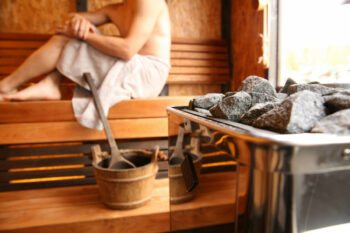 Photo: Harri Tarvainen/Visit Finland Allow yourself a reasonable amount of time: the sauna is a place for relieving stress and tension – unhurriedly. Have a shower before entering the hot room. Place a small towel on the bench to sit on, both for hygienic reasons and because the bench may feel rather hot. The temperature in the hot room is a matter of preference but the Finnish Sauna Society recommends from 80 to 100 degrees Celsius. Some people, however, are quite happy in 70-degree heat. What is universally agreed by responsible sauna bathers is that competing to see who can stand the most heat is both silly and unhealthy. Increase the humidity by throwing water on the stones and after a few minutes of perspiring refresh yourself in the shower or with other clean water. People with heart complaints or high blood pressure should avoid swimming in cold water after leaving the hot room. If you are enjoying the sauna experience, go back into the hot room to perspire more and whisk yourself with the bundle of leafy birch twigs known in Finnish as a vihta. Use of the vihta, or sauna whisk, is not essential (and you may not be able to obtain one) but it does enhance the cleansing effect of the sauna by opening up the pores. You can repeat the heating and cooling process as many times as you wish: in Finland most people would have at least two sessions in the hot room. Washing with soap or shampoo is generally part of the sauna routine, usually towards the end of the whole procedure. Get dressed only after the your body temperature has returned to normal and you have stopped perspiring. The following words of advice from the Finnish Sauna Society are worth remembering: “Big meals and alcohol should be avoided before the sauna.” However, “the sauna leaves you not only content but also thirsty and hungry.” Then, of course, refreshing drinks should be taken to quench the thirst and restore the body’s fluid balance. What you drink depends on local custom. The Finns usually enjoy low-strength beer – nice and cold. |
By Mikko Norros
